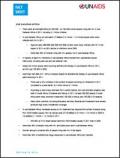What's New
Displaying results 3611 - 3620 of 4914
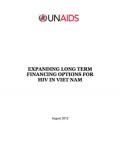
Resource | Publications,
This report explores a number of domestic financing options for the HIV/AIDS response and assesses their potential contribution to the current and future projected HIV/AIDS needs of the country.
The resource needs for the period 2012-2020 are projected to increase from VDN 2.4 trillion in 2012 to VDN 6.4 trillion in 2020. Available baseline resources are estimated at VDN 2.4 trillion in 2012, decreasing to 1.13 trillion in 2020.

Resource | Publications,
The surveillance of Human Immunodeficiency Virus (HIV) infection is of great value in designing, implementing and monitoring of public health programmes for the prevention and control of HIV infection and the Acquired Immunodeficiency Syndrome (AIDS). There are number of different methods available for HIV surveillance. Of these behavioural surveillance, biological or sero-surveillance, HIV and AIDS case surveillance and use of other supplementary data such as Sexually Transmitted Infections (STI) and Tuberculosis surveillance have been recommended by WHO/UNAIDS.

Resource | Publications,
There are various risk factors that can affect young people, such as living in a neighbourhood where drug dealing and drug abuse are taking place and where out-of-school activities are not available. Economic strain on families where parents struggle to meet living costs can influence family relationships negatively, while spending time with peers who are involved in drugs or delinquency while seeking adventure puts young people at higher risk of falling prey to drug abuse. As a consequence of these kinds of risk factors, young people may suffer from mental health problems, making them even more vulnerable to substance abuse.

Resource | Guidelines,
Clinical trials on PrEP began in 2005. These trials have focused on the effectiveness of PrEP among people who inject drugs, HIV serodiscordant couples, heterosexual men and women, women at higher risk of HIV exposure, and men and transgender women who have sex with men (MSM-TG). Of these, two have completed as planned, one was stopped early for effectiveness, and two others were stopped or had arms discontinued for reasons of futility.

Resource | Presentations,
This report is based on analysis of data provided by the 23 donor government members of the Organisation for Economic Co-operation and Development (OECD)’s Development Assistance Committee (DAC) and the European Union (EU). It includes their combined bilateral assistance and contributions to the Global Fund to Fight AIDS, Tuberculosis and Malaria (the Global Fund) and to UNITAID.

Resource | Publications,
Within the GMS the need for joint action for HIV prevention and better access to treatment, care and support is increasingly articulated at national and provincial (border provinces) levels, especially in contexts where migrants and mobile populations face barriers to accessing services in destination countries. In 2004, the six countries in the GMS signed a Memorandum of Understanding (MoU) for Joint Action to Reduce HIV Vulnerability Related to Population Movement and, following the expiration of this MOU in 2009, an amended MoU was signed during the 4th GMS Summit in Myanmar in 2011. Accompanying the 2011 MOU is a draft Joint Action Program (JAP) that identifies priority areas for bilateral and multilateral cooperation.
Drawing guidance from both the MoU and its attached draft JAP, the Asian Development Bank (ADB) and the UNDP Asia-Pacific Regional Centre jointly convened this 2012 Consultation on the Memorandum of Understanding to Reduce HIV Vulnerability Associated with Population Movement, in order to formulate concrete national, bilateral and subregional activities to address the challenges faced by migrants and mobile populations in this area.
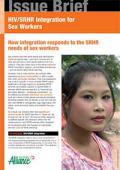
Resource | Publications,
Sex workers have the same sexual and reproductive rights as anyone else – such as to choose who to have sex with and to have sexual relations free from violence. They also share many of the same needs for SRHR information, support, commodities and services – such as advice about family planning.
This brief specifically focuses on the importance, but also challenges, of HIV/SRHR integration for sex workers. It is based on the experiences of a growing number of groups working with such communities to put integration into practice in a range of setting. These have given important insights into ‘what works’. But they also highlight that everyone is still learning and questions remain about what constitutes good practice.
This issue brief promotes integration as a desirable goal in the long-term. However, it also emphasizes that organizations must work in a way and at pace that is appropriate and feasible for them – to ensure that the joining of HIV and SRHR services and systems enhances, rather than compromises, support for sex workers.
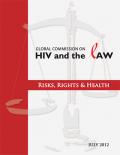
Resource | Publications,
The Global Commission on HIV and the Law is an independent body, established at the request of the Programme Coordinating Board of the Joint United Nations Programme on HIV/AIDS (UNAIDS) and supported by a Secretariat based at the United Nations Development Programme (UNDP). This report reflects the views and conclusions of the Commission, as well as its recommendations to countries, civil society actors, the private sector and the United Nations.
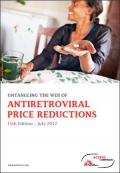
Resource | Publications,
Now is a critical time to ensure widest possible access to ART: a landmark scientific breakthrough in 2011 showed that treatment with antiretroviral medicines (ARVs) not only saves lives, but can also stop HIV from being transmitted by up to 96%. In response to this evidence, in 2012 the World Health Organization (WHO) issued guidance supporting immediate treatment – regardless of a person’s immune system’s status or CD4 count – for HIV-positive people who have HIV-negative partners, in order to help prevent transmission of the virus.5 At the same time, guidance was also issued suggesting the possibility of offering full antiretroviral therapy for life to all pregnant women living with HIV for prevention of mother-to-child transmission of the virus (PMTCT).






